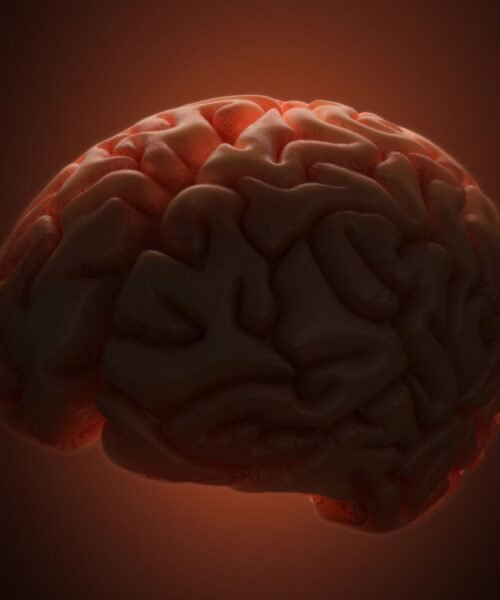Digital Detox: Maintaining Mental Health in a Mobile-Centric Life
In today’s fast-paced world, our lives are increasingly dominated by mobile devices. While these gadgets offer numerous benefits, they also come with their own set of challenges. One such challenge is maintaining mental health in a mobile-centric life. This is where the concept of a digital detox comes into play. But what exactly is a digital detox, and why is it important for our mental well-being?
The Impact of Mobile Devices on Mental Health
Mobile devices have become an integral part of our daily lives, but their constant use can have a significant impact on our mental health.
Increased Stress and Anxiety
The constant barrage of notifications, emails, and messages can lead to increased stress and anxiety. We often feel the need to respond immediately, which can be overwhelming.
Sleep Disruption
The blue light emitted by screens can interfere with our sleep patterns, making it difficult to fall asleep and stay asleep. This can lead to chronic sleep deprivation, which negatively impacts our mental health.
Reduced Attention Span
With the constant influx of information, our attention spans are becoming shorter. We find it difficult to focus on one task for an extended period, which can affect our productivity and overall well-being.
Signs You Need a Digital Detox
How do you know if you need a digital detox? Here are some signs to look out for:
Constant Checking of Devices
If you find yourself constantly checking your phone, even when there are no notifications, it might be time for a digital detox.
Feeling Overwhelmed by Notifications
Feeling overwhelmed by the sheer number of notifications you receive daily is another sign that you might need a break from your devices.
Difficulty Concentrating
If you find it difficult to concentrate on tasks without getting distracted by your phone, a digital detox could help improve your focus.
Benefits of a Digital Detox
Taking a break from your devices can have numerous benefits for your mental health.
Improved Mental Clarity
A digital detox can help clear your mind, allowing you to think more clearly and make better decisions.
Better Sleep Quality
By reducing screen time, especially before bed, you can improve your sleep quality and wake up feeling more refreshed.
Enhanced Relationships
Spending less time on your devices means more time for face-to-face interactions, which can strengthen your relationships with family and friends.
How to Start a Digital Detox
Starting a digital detox can seem daunting, but it doesn’t have to be. Here are some steps to get you started:
Setting Clear Goals
Determine what you want to achieve with your digital detox. Whether it’s reducing screen time, improving sleep, or spending more time with loved ones, having clear goals will help you stay motivated.
Creating a Schedule
Plan specific times during the day when you will be device-free. This could be during meals, before bed, or during certain activities.
Informing Friends and Family
Let your friends and family know about your digital detox so they can support you and understand why you might not be as responsive as usual.
Practical Tips for a Successful Digital Detox
Here are some practical tips to help you succeed in your digital detox:
Limiting Screen Time
Set limits on how much time you spend on your devices each day. Use apps that track your screen time and help you stay within your limits.
Engaging in Offline Activities
Find activities that don’t involve screens, such as reading, exercising, or spending time outdoors. These activities can help you relax and recharge.
Using Technology Mindfully
When you do use your devices, be mindful of how and why you’re using them. Avoid mindless scrolling and focus on activities that add value to your life.
Incorporating Mindfulness into Your Digital Detox
Mindfulness can play a crucial role in your digital detox. Here are some ways to incorporate mindfulness into your detox:
Practicing Meditation
Meditation can help you stay present and reduce stress. Set aside time each day to meditate and focus on your breath.
Journaling
Writing down your thoughts and feelings can help you process your emotions and gain clarity.
Spending Time in Nature
Nature has a calming effect on the mind. Spend time outdoors, whether it’s going for a walk, hiking, or simply sitting in a park.
Challenges of a Digital Detox and How to Overcome ThemA digital detox can come with its own set of challenges. Here are some common challenges and how to overcome them:
Dealing with FOMO (Fear of Missing Out)
It’s natural to feel like you’re missing out on something when you’re not constantly connected. Remind yourself of the benefits of your digital detox and focus on the present moment.
Managing Work-Related Technology Use
If your job requires you to be connected, set boundaries for work-related technology use. For example, avoid checking work emails outside of office hours.
Staying Committed
Staying committed to your digital detox can be challenging, especially in the beginning. Keep reminding yourself of your goals and the benefits of taking a break from your devices.
Digital Detox for Different Age Groups
A digital detox can benefit people of all ages. Here are some tips for different age groups:
Children and Teenagers
Encourage children and teenagers to engage in offline activities and set limits on screen time. Lead by example and show them the benefits of a digital detox.
Adults
Adults can benefit from setting boundaries for device use, especially during family time and before bed. Find activities that help you relax and unwind without screens.
Seniors
Seniors can benefit from a digital detox by engaging in social activities and hobbies that don’t involve screens. Encourage them to spend time with family and friends in person.
The Role of Social Media in Digital Detox
Social media can be a significant source of stress and anxiety. Here’s how to manage your social media use during a digital detox:
Understanding Social Media Addiction
Recognize the signs of social media addiction, such as constantly checking your accounts and feeling anxious when you’re not online.
Setting Boundaries with Social Media
Set specific times during the day when you will check your social media accounts. Avoid using social media before bed and during meals.
Finding Alternatives to Social Media
Find activities that can replace your social media use, such as reading, exercising, or spending time with loved ones.
Creating a Balanced Digital Lifestyle
A balanced digital lifestyle is essential for maintaining mental health. Here are some tips for creating a balanced digital lifestyle:
Establishing Healthy Digital Habits
Set limits on screen time and be mindful of how you use your devices. Focus on activities that add value to your life.
Balancing Online and Offline Activities
Find a balance between online and offline activities. Make time for hobbies, social interactions, and self
Creating a Balanced Digital Lifestyle
A balanced digital lifestyle is essential for maintaining mental health. Here are some tips for creating a balanced digital lifestyle:
Establishing Healthy Digital Habits
Set limits on screen time and be mindful of how you use your devices. Focus on activities that add value to your life.
Balancing Online and Offline Activities
Find a balance between online and offline activities. Make time for hobbies, social interactions, and self-care practices that don’t involve screens.
Long-Term Benefits of a Balanced Digital Lifestyle
Maintaining a balanced digital lifestyle can lead to long-term benefits such as improved mental health, better relationships, and increased productivity.
Case Studies: Success Stories of Digital Detox
Hearing about others’ success stories can be motivating. Here are some case studies of individuals who have successfully completed a digital detox:
Personal Experiences
Many people have shared their personal experiences of how a digital detox has positively impacted their lives. For example, some have reported feeling more present and engaged in their daily activities, while others have experienced reduced stress and anxiety.
Lessons Learned
From these success stories, we can learn valuable lessons about the importance of setting boundaries, staying committed, and finding alternative activities to replace screen time.
Tips for Others
Based on these experiences, here are some tips for others considering a digital detox: start small, be patient with yourself, and seek support from friends and family.
Digital Detox and Workplace Productivity
A digital detox can also benefit workplace productivity. Here are some ways to reduce digital distractions at work:
Reducing Digital Distractions at Work
Set specific times for checking emails and messages, and avoid multitasking. Focus on one task at a time to improve efficiency and productivity.
Encouraging a Digital Detox Culture in the Workplace
Encourage your colleagues to take breaks from their devices and promote a culture of mindfulness and balance. This can lead to a more positive and productive work environment.
Benefits for Employers and Employees
Both employers and employees can benefit from a digital detox. Employers may see increased productivity and employee satisfaction, while employees can experience reduced stress and improved mental health.
Tools and Apps to Aid in Digital Detox
There are several tools and apps available to help you with your digital detox journey:
Apps for Limiting Screen Time
Apps like “Moment” and “Screen Time” can help you track and limit your screen time, making it easier to stay within your goals.
Meditation and Mindfulness Apps
Apps like “Headspace” and “Calm” offer guided meditations and mindfulness exercises to help you stay present and reduce stress.
Offline Activity Suggestions
Apps like “Meetup” and “Eventbrite” can help you find offline activities and events in your area, encouraging you to engage in social interactions and hobbies.
Conclusion
In conclusion, a digital detox can have numerous benefits for your mental health and overall well-being. By setting clear goals, creating a schedule, and incorporating mindfulness practices, you can successfully take a break from your devices and enjoy a more balanced and fulfilling life. Remember, it’s important to stay committed and seek support from friends and family. So, why not take the first step towards a digital detox today?
FAQs
What is a digital detox?
A digital detox is a period during which a person refrains from using digital devices such as smartphones, computers, and tablets to reduce stress and improve mental well-being.
How long should a digital detox last?
The duration of a digital detox can vary depending on individual needs and goals. It can range from a few hours to several days or even weeks.
Can a digital detox improve mental health?
Yes, a digital detox can improve mental health by reducing stress, anxiety, and sleep disturbances, and by promoting mindfulness and better focus.
What are some activities to do during a digital detox?
During a digital detox, you can engage in activities such as reading, exercising, spending time outdoors, practicing meditation, and socializing with friends and family.
How can I stay committed to a digital detox?
To stay committed to a digital detox, set clear goals, create a schedule, seek support from friends and family, and remind yourself of the benefits of taking a break from your devices.









